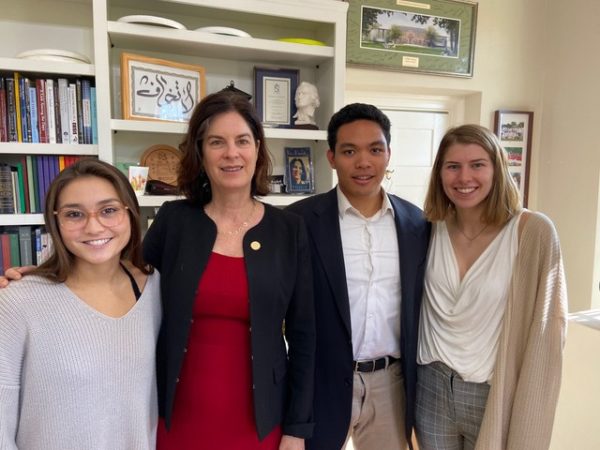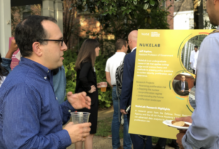Greenhouse Gas Reporting, it’s a necessity!
By Madeline Bertagnolli ’22
William & Mary is leading the way in sustainability, but none of our campus knows it! Last fall, I was on a student research team of three in which we gathered and reported on the Greenhouse Gas Emissions for fiscal year 2018 in a long report. Greenhouse gas reporting is done by many universities to keep track of their emissions and look at areas in which they could improve and possibly cut their emissions. William & Mary has been producing greenhouse gas reports every year since 2011, but with the university’s recent announcement of Climate Neutrality by 2030 we want to make our reporting more effective and reach a larger audience of student and faculty members. With this in mind, I began my spring research with a focus on the best reporting methods for greenhouse gas emissions.
I looked into various school’s reporting mechanisms and other readings regarding the best reporting and effective communication. I thought the most well-done long report was Vanderbilt and the best online reporting mechanism was American University. Vanderbilt’s report was nearly 50 pages, but it was well done. Vanderbilt separated Vanderbilt University from the medical center, which is important for William & Mary to do for the main campus and William & Mary’s Virginia Institute of Marine Science (VIMS). Although long, they separated the inventory data with updates regarding sustainable changes that were occurring throughout campus. American University’s online reporting was simple as they just presented their emissions through the years in a bar graph, an informative section about what each scope was, and a detailed section on how they were able to decrease emissions from each scope.
What’s W&M up to??? Carbon Neutrality!
In Fall 2019, William & Mary and the University of Virginia came together, and both announced their plans to become carbon neutral by 2030. The two universities will share information and collaborate to reach their goal of zero net greenhouse emissions. This is part of larger efforts made by Virginia, as Governor Ralph Northam signed an executive order this past spring to make Virginia attain 100% of its energy from carbon free sources by 2050.
I looked into many other schools and found to make our long report more accessible and keep the reader’s attention it is best to “flip the report,” break up text with graphs and sustainability updates, and use terminology that is more understood. All of this will keep the reader engaged and also make our report more appealing to look at. For general suggestions regarding the content of the report, the main campus and VIMS should be kept separate and William & Mary should normalize the data compared to other schools. This would entail comparing William & Mary’s emissions with other colleges accounting for size and population differences; which could be done by comparing the universities’ emissions per student or per square footage. Lastly, for our website it should follow American University; have a graph of MTCDE changes through the years with more specific graphs on emissions that vary or are a large part of our carbon footprint. It should provide details on scope 1 and 2* emissions and statistics on the institutional changes we have made to bring down emissions.
I also conducted all of this research to produce my own short 3 page report. In this short report I wanted it to be easily accessible and understandable for students and faculty, thus I condensed down information from our long report into this report. In my short report, I knew it was important to establish institutional data in the very beginning, so I created a nice graphic about general changes occurring on campus. The rest of the report consists of graphs and tables regarding scope 1 and 2* emissions through the years. I also broke up the report with sustainability updates that were occurring throughout campus to celebrate William & Mary’s efforts.
I enjoyed this research and am excited to take this knowledge as I report on the greenhouse gas inventory for William & Mary in the next coming years. With this research I will be able to ensure that all our reporting mechanisms are easily understood and accessible to everyone. I also want all of our reporting mechanisms to look professional and be as accurate as possible in aid for William & Mary’s climate action plan.
*scope 1 is on-campus fuel, funded transportation and fertilizer; scope 2 is electrical usage; and scope 3 is indirect emissions through students and faculty (study abroad, commuting, waste, etc.)





No comments.
Comments are currently closed. Comments are closed on all posts older than one year, and for those in our archive.